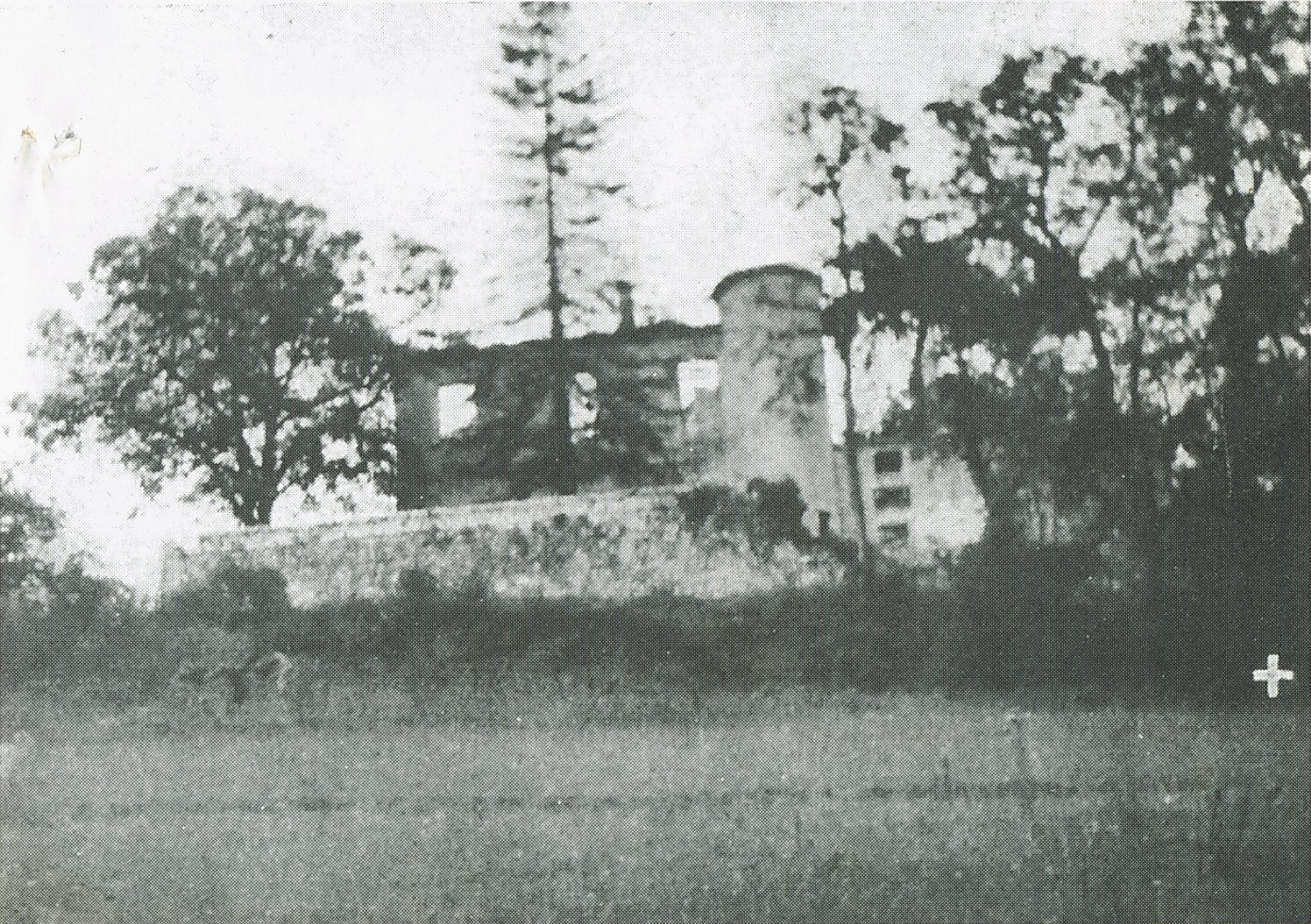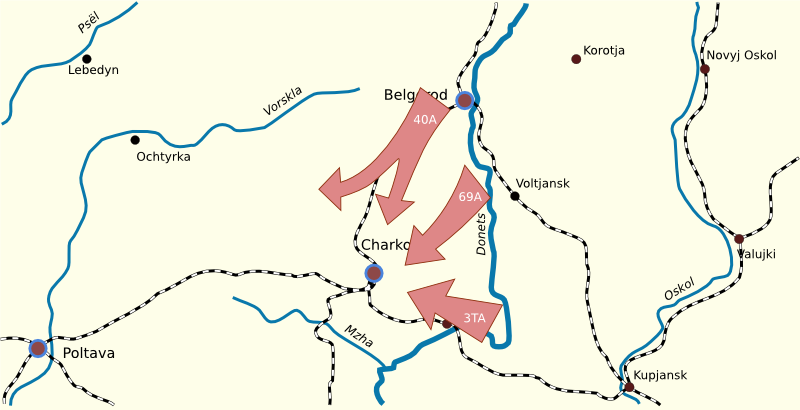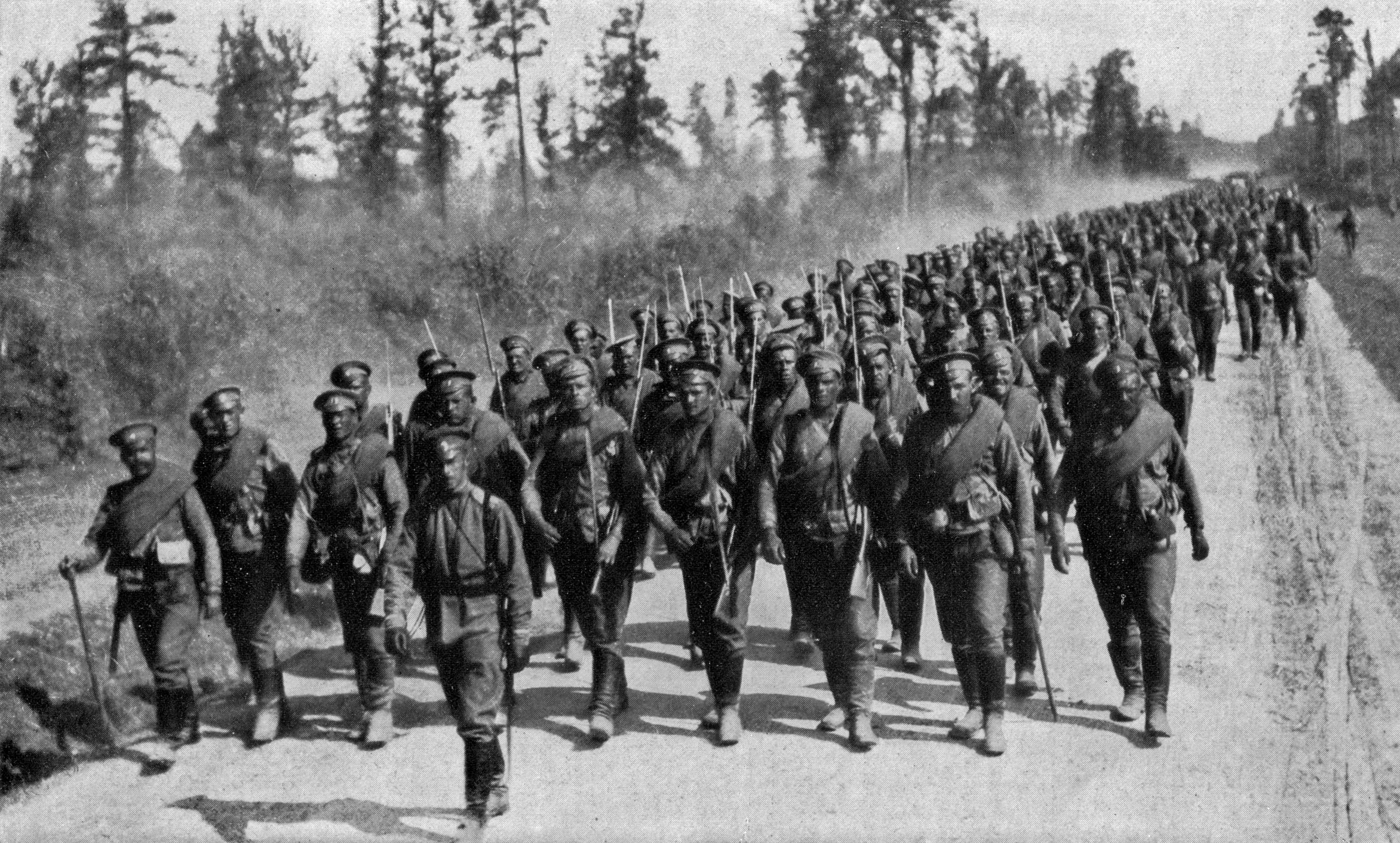|
Paul Hausser
Paul Hausser, also known by his birth name Paul Falk post war (7 October 1880 – 21 December 1972), was a German general and, together with Sepp Dietrich, one of the two highest ranking commanders in the Waffen-SS. He played a key role in the post-war revisionist efforts by former members of the Waffen-SS to achieve historical and legal rehabilitation. Hausser served as an officer in the Prussian Army during World War I and attained the rank of general in the inter-war '' Reichsheer''. After retirement, he joined the SS and was instrumental in forming the Waffen-SS. During World War II, he rose to the level of army group commander. He led Waffen-SS troops in the Third Battle of Kharkov, the Battle of Kursk and the Normandy Campaign. After the war he became a founding member and the first spokesperson of HIAG, a lobby group and a negationist veterans' organisation, founded by former high-ranking Waffen-SS personnel in West Germany in 1951. It campaigned for the restora ... [...More Info...] [...Related Items...] OR: [Wikipedia] [Google] [Baidu] |
Brandenburg An Der Havel
Brandenburg an der Havel (; ) is a town in Brandenburg, Germany, which served as the capital of the Margraviate of Brandenburg until it was replaced by Berlin in 1417. With a population of 72,040 (as of 2020), it is located on the banks of the Havel, River Havel. The town of Brandenburg provided the name for the medieval Prince-Bishopric of Brandenburg, Bishopric of Brandenburg, the Margraviate of Brandenburg and the current state of Brandenburg. Today, it is a small town compared to nearby Berlin but was the original nucleus of the former realms of Brandenburg and Kingdom of Prussia, Prussia. History Middle Ages The name of the city is a combination of two words ''braniti'' – to protect/defend and ''bor'' – forest/wood. Brenna, which had been a fort of the West Slavs, West Slavic tribe Stodoranie, was conquered in 929 after the Battle of Lenzen by the German King Henry the Fowler of Saxony. It was at this time first mentioned in documents as ''Brennaburg''. By the death ... [...More Info...] [...Related Items...] OR: [Wikipedia] [Google] [Baidu] |
SS Division Das Reich
The 2nd SS Panzer Division ''Das Reich'' () or SS Division ''Das Reich'' was an armored division of the of Nazi Germany during World War II. Initially formed from regiments of the ''SS-Verfügungstruppe'' (SS-VT), ''Das Reich'' initially served during the Battle of France in 1940 before seeing combat on the Eastern Front between 1941 and 1944. It was transferred to the Western Front in 1944, where it fought in the Battle of Normandy and the Battle of the Bulge. Toward the end of the war, it was transferred back to the Eastern Front, where it participated in Operation Spring Awakening in Hungary. The division became notorious for its brutality, committing numerous war crimes during its operations. The division was responsible for several massacres, including the Tulle massacre on 9 June 1944, and the Oradour-sur-Glane massacre on 10 June 1944. Operational history In August 1939 Adolf Hitler placed the Leibstandarte SS Adolf Hitler (LSSAH), later SS Division Leibstandarte, a ... [...More Info...] [...Related Items...] OR: [Wikipedia] [Google] [Baidu] |
Third Battle Of Kharkov
The Third Battle of Kharkov was a series of battles on the Eastern Front (World War II), Eastern Front of World War II, undertaken by Nazi Germany's Army Group South against the Soviet Red Army, around the city of Kharkov between 19 February and 15 March 1943. Known to the German side as the Donets Campaign, and in the Soviet Union as the Donbass and Kharkov operations, the German counterstrike led to the recapture of the cities of Kharkov and Belgorod. As the German 6th Army (Wehrmacht), 6th Army was encircled in the Battle of Stalingrad, the Red Army undertook a series of wider attacks against the rest of Army Group South. These culminated on 2 January 1943 when the Red Army launched Operation Star and Operation Gallop, which between January and early February broke German defenses and led to the Soviet recapture of Kharkov, Belgorod, Kursk, as well as Voroshilovgrad and Izium. These victories caused participating Soviet units to over-extend themselves. Freed on 2 February ... [...More Info...] [...Related Items...] OR: [Wikipedia] [Google] [Baidu] |
Eastern Front (World War II)
The Eastern Front, also known as the Great Patriotic War (term), Great Patriotic War in the Soviet Union and its successor states, and the German–Soviet War in modern Germany and Ukraine, was a Theater (warfare), theatre of World War II fought between the European Axis powers and Allies of World War II, Allies, including the Soviet Union (USSR) and Polish Armed Forces in the East, Poland. It encompassed Central Europe, Eastern Europe, Northern Europe, Northeast Europe (Baltic states, Baltics), and Southeast Europe (Balkans), and lasted from 22 June 1941 to 9 May 1945. Of the estimated World War II casualties, 70–85 million deaths attributed to World War II, around 30 million occurred on the Eastern Front, including 9 million children. The Eastern Front was decisive in determining the outcome in the European theatre of World War II, European theatre of operations in World War II, eventually serving as the main reason for the defeat of Nazi Germany and the Axis ... [...More Info...] [...Related Items...] OR: [Wikipedia] [Google] [Baidu] |
Invasion Of Yugoslavia
The invasion of Yugoslavia, also known as the April War or Operation 25, was a Nazi Germany, German-led attack on the Kingdom of Yugoslavia by the Axis powers which began on 6 April 1941 during World War II. The order for the invasion was put forward in "Führer Directive No. 25", which Adolf Hitler issued on 27 March 1941, following a Yugoslav coup d'état that overthrew the pro-Axis government. The invasion commenced with an overwhelming Operation Retribution (1941), air attack on Belgrade and facilities of the Royal Yugoslav Air Force (VVKJ) by the Luftwaffe (German Air Force) and attacks by German Army (Wehrmacht), German land forces from southwestern Kingdom of Bulgaria, Bulgaria. These attacks were followed by German thrusts from Kingdom of Romania, Romania, Kingdom of Hungary (1920–1946), Hungary and the Ostmark (Austria), Ostmark (modern-day Austria, then part of Germany). Italian forces were limited to air and artillery attacks until 11 April, when the Royal Italian Ar ... [...More Info...] [...Related Items...] OR: [Wikipedia] [Google] [Baidu] |
Battle Of France
The Battle of France (; 10 May – 25 June 1940), also known as the Western Campaign (), the French Campaign (, ) and the Fall of France, during the Second World War was the Nazi Germany, German invasion of the Low Countries (Belgium, Luxembourg and the Netherlands) and French Third Republic, France. The plan for the invasion of the Low Countries and France was called (Case Yellow or the Manstein plan). (Case Red) was planned to finish off the French and British after the Dunkirk evacuation, evacuation at Dunkirk. The Low Countries and France were defeated and occupied by Axis troops down to the Demarcation line (France), Demarcation line. On 3 September 1939, French declaration of war on Germany (1939), France and United Kingdom declaration of war on Germany (1939), Britain declared war on Nazi Germany, over the German invasion of Poland on 1 September. In early September 1939, the French army began the limited Saar Offensive but by mid-October had withdrawn to the start line ... [...More Info...] [...Related Items...] OR: [Wikipedia] [Google] [Baidu] |
Invasion Of Poland
The invasion of Poland, also known as the September Campaign, Polish Campaign, and Polish Defensive War of 1939 (1 September – 6 October 1939), was a joint attack on the Second Polish Republic, Republic of Poland by Nazi Germany, the Slovak Republic (1939–1945), Slovak Republic, and the Soviet Union, which marked the beginning of World War II. The German invasion began on 1 September 1939, one week after the signing of the Molotov–Ribbentrop Pact between Germany and the Soviet Union, and one day after the Supreme Soviet of the Soviet Union had approved the pact. The Soviet invasion of Poland, Soviets invaded Poland on 17 September. The campaign ended on 6 October with Germany and the Soviet Union dividing and annexing the whole of Poland under the terms of the German–Soviet Frontier Treaty. The aim of the invasion was to disestablish Poland as a sovereign country, with its citizens destined for The Holocaust, extermination. German and Field Army Bernolák, Slovak forces ... [...More Info...] [...Related Items...] OR: [Wikipedia] [Google] [Baidu] |
World War II
World War II or the Second World War (1 September 1939 – 2 September 1945) was a World war, global conflict between two coalitions: the Allies of World War II, Allies and the Axis powers. World War II by country, Nearly all of the world's countries participated, with many nations mobilising all resources in pursuit of total war. Tanks in World War II, Tanks and Air warfare of World War II, aircraft played major roles, enabling the strategic bombing of cities and delivery of the Atomic bombings of Hiroshima and Nagasaki, first and only nuclear weapons ever used in war. World War II is the List of wars by death toll, deadliest conflict in history, causing World War II casualties, the death of 70 to 85 million people, more than half of whom were civilians. Millions died in genocides, including the Holocaust, and by massacres, starvation, and disease. After the Allied victory, Allied-occupied Germany, Germany, Allied-occupied Austria, Austria, Occupation of Japan, Japan, a ... [...More Info...] [...Related Items...] OR: [Wikipedia] [Google] [Baidu] |
Eastern Front (World War I)
The Eastern Front or Eastern Theater, of World War I, was a theater (warfare), theater of operations that encompassed at its greatest extent the entire frontier between Russian Empire, Russia and Kingdom of Romania, Romania on one side and Austria-Hungary, Kingdom of Bulgaria, Bulgaria, the Ottoman Empire, and German Empire, Germany on the other. It ranged from the Baltic Sea in the north to the Black Sea in the south, involved most of Eastern Europe, and stretched deep into Central Europe. The term contrasts with the Western Front (World War I), Western Front, which was being fought in Belgium and French Third Republic, France. Unlike the static warfare on the Western Front, the fighting on the geographically larger Eastern Front was maneuver warfare, more dynamic, often involving the flanking and encirclement of entire formations, and resulted in over 100,000 square miles of territory becoming occupied by a foreign power. At the start of the war Russia launched offensives agai ... [...More Info...] [...Related Items...] OR: [Wikipedia] [Google] [Baidu] |
World War I
World War I or the First World War (28 July 1914 – 11 November 1918), also known as the Great War, was a World war, global conflict between two coalitions: the Allies of World War I, Allies (or Entente) and the Central Powers. Fighting took place mainly in European theatre of World War I, Europe and the Middle Eastern theatre of World War I, Middle East, as well as in parts of African theatre of World War I, Africa and the Asian and Pacific theatre of World War I, Asia-Pacific, and in Europe was characterised by trench warfare; the widespread use of Artillery of World War I, artillery, machine guns, and Chemical weapons in World War I, chemical weapons (gas); and the introductions of Tanks in World War I, tanks and Aviation in World War I, aircraft. World War I was one of the List of wars by death toll, deadliest conflicts in history, resulting in an estimated World War I casualties, 10 million military dead and more than 20 million wounded, plus some 10 million civilian de ... [...More Info...] [...Related Items...] OR: [Wikipedia] [Google] [Baidu] |
Army Group G
Army Group G () fought on the Western Front of World War II and was a component of OB West. History Army Group G was initially deployed as an '' Armeegruppe''-type formation on 28 April 1944, but was later upgraded to ''Heeresgruppe''-type on 12 September 1944. When the Allied invasion of Southern France took place, Army Group G had eleven divisions with which to hold France south of the Loire.Pogue (referencesCHAPTER XII The Campaign in Southern Francep.227 Between August 17 and 18, the German Armed Forces High Command ordered Army Group G ( with the exception of the troops holding the fortress ports) to abandon southern France. German LXIV Corps, in command in the southwest since First Army had been withdrawn a few weeks earlier to hold the line on the River Seine southeast of Paris, formed three march groups and withdrew eastward toward Dijon. At the same time, the German Nineteenth Army retreated northward through the Rhône valley toward the Plateau de Langres. Ther ... [...More Info...] [...Related Items...] OR: [Wikipedia] [Google] [Baidu] |








